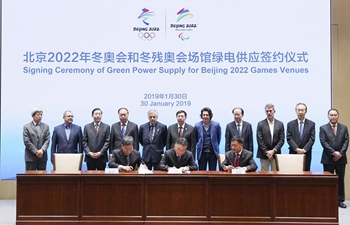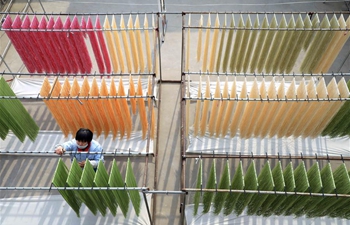ISLAMABAD, Jan. 31 (Xinhua) -- The State Bank of Pakistan (SBP) on Thursday decided to increase its key interest rate by 25 basis points as macroeconomic situation in the country remained constrained.
The central bank's governor Tariq Bajwa announced the monetary policy statement for the next two months. With the latest increase, the SBP has jacked up the key discount rate to a six-year high of 10.25 percent. It has scooped up the key rate by 450 basis points since January 2018.
Earlier in the day, the central bank's Monetary Policy Committee in a meeting take stock of the macroeconomic situation of the country and the proposed measures to keep the key rate at par with the situation.
Economic experts said that the rate hike was above the market expectation. They further stated that the rate hike was a signal by the central bank that Pakistan's macroeconomic situation was still constrained, adding that they were expecting the central bank to keep its key discount rate unchanged for the upcoming two months.
However, the latest rate hike of 25 basis points is much lower than an increase of 150 basis points in the central bank's previous monetary policy statement announced in November last year.
Bajwa told a press conference in Karachi that the primary factors behind the rate hike were persisting inflationary pressures, worsening fiscal situation, and continuing current account pressures.
He said that the expected current account deficit for the fiscal year of 2018-19 is likely to be in the range of 13-14 billion U.S. dollars. He further stated that the central bank's foreign exchange reserves currently are close to 8.2 billion U.S. dollars after it received supports from other countries.
"The financing of the current account deficit nevertheless remained challenging as foreign direct investment, private loans, and official inflows were insufficient to completely finance the deficit," he added, "Thus, a significant part of the current account deficit was managed by using the country's own resources, which reduced the State Bank's net liquid foreign exchange reserves."













